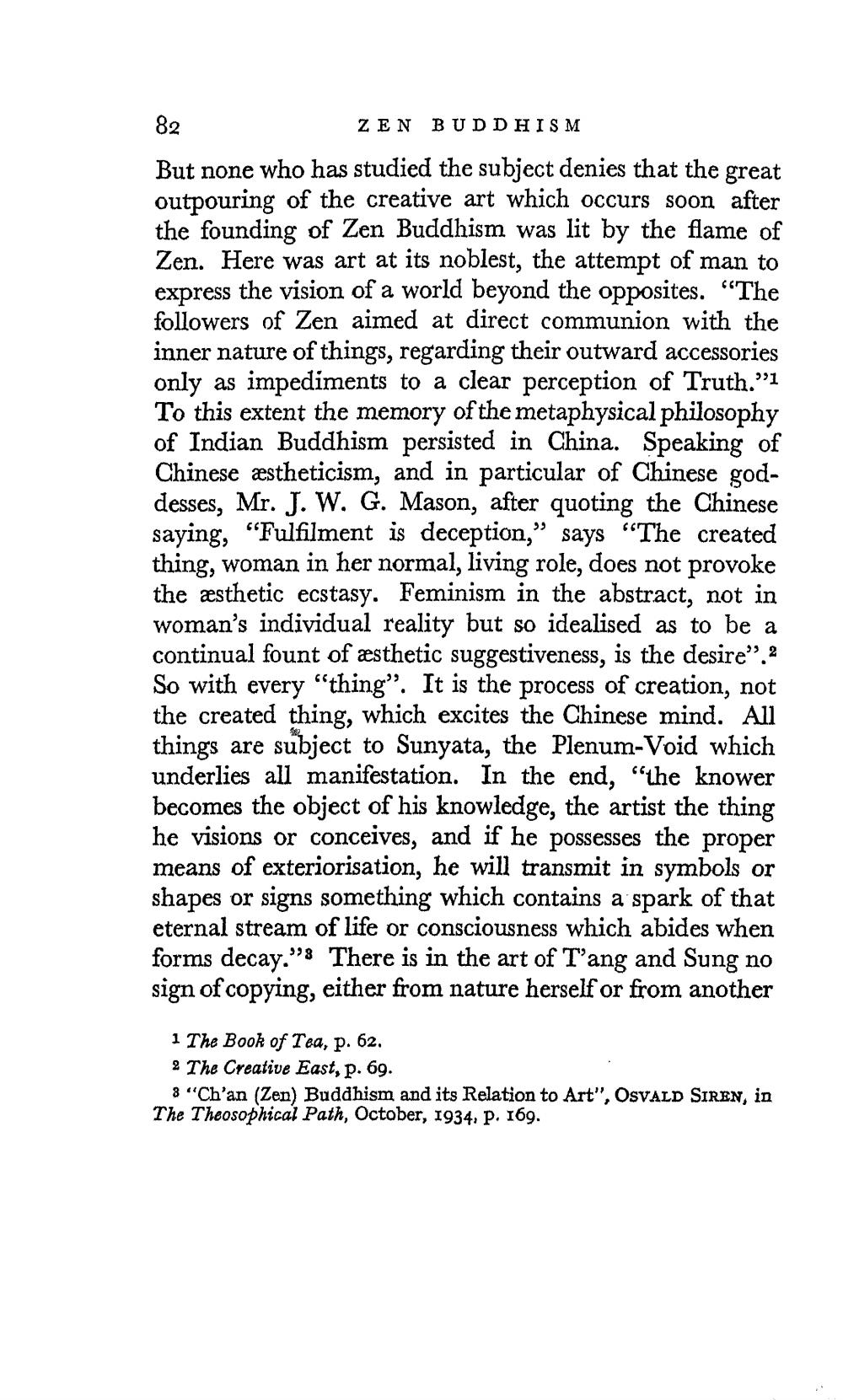________________
82
ZEN BUDDHISM
But none who has studied the subject denies that the great outpouring of the creative art which occurs soon after the founding of Zen Buddhism was lit by the flame of Zen. Here was art at its noblest, the attempt of man to express the vision of a world beyond the opposites. “The followers of Zen aimed at direct communion with the inner nature of things, regarding their outward accessories only as impediments to a clear perception of Truth.”1 To this extent the memory of the metaphysical philosophy of Indian Buddhism persisted in China. Speaking of Chinese ästheticism, and in particular of Chinese goddesses, Mr. J. W. G. Mason, after quoting the Chinese saying, "Fulfilment is deception," says "The created thing, woman in her normal, living role, does not provoke the æsthetic ecstasy. Feminism in the abstract, not in woman's individual reality but so idealised as to be a continual fount of æsthetic suggestiveness, is the desire”. 2 So with every "thing". It is the process of creation, not the created thing, which excites the Chinese mind. All things are subject to Sunyata, the Plenum-Void which underlies all manifestation. In the end, "the knower becomes the object of his knowledge, the artist the thing he visions or conceives, and if he possesses the proper means of exteriorisation, he will transmit in symbols or shapes or signs something which contains a spark of that eternal stream of life or consciousness which abides when forms decay." There is in the art of Tang and Sung no sign of copying, either from nature herself or from another
1 The Book of Tea, p. 62. 2 The Creative East, p. 69.
8 "Ch'an (Zen) Buddhism and its Relation to Art", OSVALD SIREN, in The Theosophical Path, October, 1934, p. 169.




